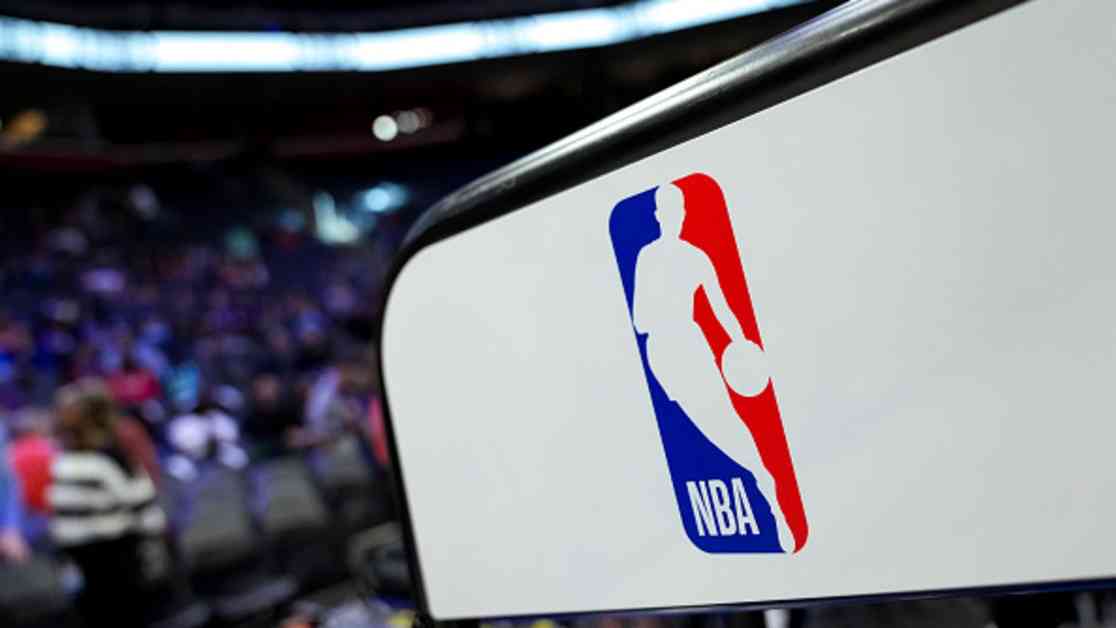Dallas Mavericks and New Orleans Pelicans fans are eagerly anticipating the upcoming NBA season, but they may need to find a new way to watch their favorite teams in action. Both franchises have announced their departure from regional sports networks owned by Diamond Sports, leaving fans wondering where they will be able to catch local games.
The NBA season is scheduled to kick off on October 22, but as of now, neither the Mavericks nor the Pelicans have publicly disclosed where their local games will be broadcast. Traditionally, both teams have had partnerships with local broadcasters to air their games, but these relationships seem to be evolving.
It has been reported that the New Orleans Pelicans have reached an agreement in principle with Gray Television to broadcast their games this season. While representatives from Gray and the Pelicans have not confirmed this information, it seems likely based on past collaborations between the two entities. Last season, the Pelicans aired 10 of their matchups on Gray’s local stations, establishing a precedent for future partnerships.
On the other hand, the Dallas Mavericks, who made an impressive run to the NBA Finals last season, had a 13-game agreement with Tegna’s Dallas-Fort Worth stations. However, with their departure from Diamond Sports, it remains unclear who will take over broadcasting duties for the Mavericks this season. Representatives for the team and Tegna have yet to comment on the matter, leaving fans in suspense.
The Mavericks and Pelicans are not the only teams to make the move away from Diamond-owned regional sports networks, which operate under the Bally Sports brand. Diamond Sports has been grappling with financial challenges, including navigating its way out of bankruptcy over the past 18 months. As part of this process, several NBA, WNBA, and NHL teams have opted to shift their regular-season games to local broadcasters instead.
In the case of the Mavericks and Pelicans, Diamond Sports will receive $1.3 million and over $297,000 in repayments, respectively, as part of the termination agreements. These payments indicate a clean break between the teams and the regional sports networks, setting the stage for new broadcasting partnerships moving forward.
The decision to part ways with Diamond Sports comes at a crucial time for the company, as it finalizes broadcast and streaming rights agreements with the NBA and NHL for the upcoming season. These deals are essential for Diamond’s restructuring efforts and are contingent on court approval. The CEO of Diamond Sports, David Preschlack, expressed gratitude for the ongoing partnerships with the leagues, highlighting the significance of these agreements in the company’s journey out of bankruptcy protection.
Diamond Sports has faced challenges in the wake of the cable industry’s decline, despite launching a sports-only streaming service in 2022. With an $8 billion debt burden, the company’s financial woes were insurmountable, leading to the bankruptcy filing. As the NBA and NHL seasons draw closer, Diamond is under increased pressure to demonstrate a viable business plan and ensure it can meet its financial obligations.
One significant development for Diamond Sports was the agreement reached with Comcast to restore its networks to cable TV customers. The blackout of Bally Sports networks on Comcast, one of Diamond’s major distributors, had begun in early May, impacting viewers who relied on the network for sports content. The resolution of this dispute marked a positive step for Diamond as it seeks to stabilize its operations and regain the trust of its audience.
As fans eagerly await news of where they can watch Mavericks and Pelicans games this season, the landscape of sports broadcasting continues to evolve. The shift away from regional sports networks towards local broadcasters reflects a broader trend in the industry, as companies adapt to changing consumer preferences and technological advancements.
The Impact on Fans
For Mavericks and Pelicans fans, the change in broadcasting arrangements may have significant implications for their viewing experience. Local sports networks have long been the go-to source for live games and comprehensive coverage of their favorite teams. With the transition away from Diamond-owned networks, fans may need to adjust their viewing habits and explore new ways to access game broadcasts.
The uncertainty surrounding the broadcasting of Mavericks and Pelicans games raises questions about the availability and accessibility of these matchups. While the teams are likely working diligently to secure new broadcasting partnerships, fans may face disruptions in their ability to watch games, especially at the start of the season. This could create frustration and confusion among loyal supporters who rely on local broadcasts to follow their teams.
The Future of Sports Broadcasting
The departure of the Mavericks and Pelicans from Diamond-owned networks underscores the changing landscape of sports broadcasting. As traditional cable models face challenges from streaming services and digital platforms, sports leagues and teams are exploring new avenues to reach audiences and monetize their content. The shift towards local broadcasters may offer teams more flexibility and control over how their games are distributed, potentially leading to enhanced fan engagement and revenue opportunities.
In an era of cord-cutting and on-demand content, sports organizations must adapt to evolving consumer preferences and technological advancements. By partnering with local broadcasters or exploring direct-to-consumer streaming options, teams can tailor their content delivery to meet the demands of modern viewers. This shift may also open up new revenue streams and marketing opportunities for franchises, enabling them to connect with fans in innovative ways.
The Road Ahead
As the NBA season approaches, the Mavericks and Pelicans will need to finalize their broadcasting arrangements to ensure that fans can continue to support their teams. While the departure from Diamond-owned networks represents a new chapter for both franchises, it also presents an opportunity for them to redefine how they engage with their audience and deliver content. By forging strategic partnerships with local broadcasters and embracing digital platforms, the Mavericks and Pelicans can create a more dynamic and engaging viewing experience for fans.
In the ever-evolving landscape of sports broadcasting, adaptability and innovation are key to staying ahead of the curve. As fans eagerly await news of where they can watch their beloved teams this season, the Mavericks and Pelicans have the chance to chart a new course for how games are broadcast and consumed. With the support of their loyal fan base and the potential for new partnerships, both teams can navigate this transition successfully and continue to deliver exciting basketball action to audiences across the country.






















